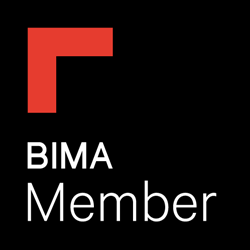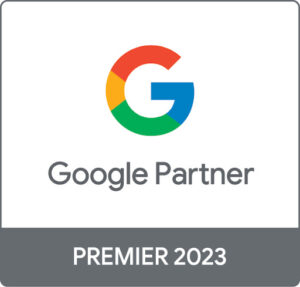It is often found in the realm of Paid Search that when creating or optimising campaigns, there is a heavy focus on keyword and bidding strategies. This isn’t wrong as these components are significant contributors to the success of PPC campaigns. However, this is a simple step that is often overlooked in the development of a researched and detailed PPC audience targeting strategy.
How developing a PPC audience targeting strategy can increase ROI & and drive desired clicks
The role of search plays a pivotal role in digital consumer behaviour, with Google receiving almost 3.5 billion searches every day and this set to grow roughly by 10% every year (WordStream, 2019). For a successful PPC campaign, it would require uniquely meeting the demand from a user’s search query with the product or service. This is where the addition of a thought through PPC audience targeting strategy comes in. As often the omission of this is the missing puzzle piece to create a holistically successful PPC campaign.
By placing correct and relevant products or services in a unique way, at the right time, in the right places to the right people.
What is PPC audience targeting
Before the exploration of the importance of PPC audience strategies and the types of audience targeting strategies, it is important to establish what PPC audience targeting is. It is pretty much what it says on the tin. It is the combination of data to purposefully identify and segment a pool of consumers based on factors such as interests, search habits, buying intent and demographics.
Initially it may appear that the act of PPC audience targeting decreases the pool of potential impressions – and the short answer to this would be yes. However, the pool you are now left with is more valuable because they should be more interested in your products or services and naturally be further down the buying funnel. Thus meaning you can maximise your ad spend and use it in a more efficient way by targeting the right people.
It is fundamental to know who your audience is. In doing this, it will then allow you to eliminate impressions from those non-converting customers. This can be clearly defined through audience personas. Knowing the ways that your ideal audience tic can only be trustfully informed from consumer behaviour data.
Lastly, it’s important to understand that despite making decisions from informed data sources, you are still testing the return. This will mean that there will be ongoing optimisation and tweaks needed along the way to establish a brilliantly performing, PPC targeted campaign.
Why is PPC audience targeting Important?
Clear Focus – By targeting a well-defined audience in PPC it means that you can stay focused. You have a clear audience that you would like to reach, who should be interested in what you have to say. This focus will also extend to a more focused budget, better time spent on PPC campaign research and creation and can even enhance future plans and efforts.
Better communication – PPC audience targeting is important because it trickles down to even the text used in ads. As you have established your audience, you can then use this to use the right language to appeal to them.
These psychological targeting factors that can be used in the PPC campaign are examples of ways PPC audience targeting can allow more time to better optimise and therefore achieve better results.
Better quality traffic – Lastly, you can market to the people who have the demand for your product or service. This will increase the quality of your on-site behaviour and the behavioural metrics from the PPC campaigns.
What are some PPC audience targeting strategies in Google Ads?
In Google Ads you can target the audience you wish to reach on the demographics of age, gender, location etc, and psychographics for their interests and habits. Additional to this you can target audiences based on what they are actively searching or based on their previous interactions with the business. Once this has been established, it is time to pick a strategy.
5 key audience targeting strategies to use
In-market audiences
This refers to the selection of audiences who are currently in the market for a product or service. They would have recently researched for the products or services in that market, suggesting that they are considering buying the product or service.
This method of PPC audience targeting can be a great way to expand your reach to audiences who may not have heard of the business. Yet still being targeted.
Affinity audiences
Affinity audiences are a form of PPC audience targeting that is higher up the buyers decision making funnel. Therefore the audiences are based and built on more general browsing behaviour factors such as an individual’s interests, lifestyles, and passions. Google places large groups of people in categories such as ‘travel’ or ‘sports.
This form of PPC audience targeting is lendable to strategies such as brand awareness or is effective to increase the likelihood that consumers in these affinity categories would consider purchasing from the business. This way you can expand your audience to users who are still likely to convert.
Custom Affinity Audiences
If you are looking to create affinity audiences, it would be advised to go the extra step and investigate custom affinity audiences.
The custom affinity audience is made up of a minimum of five different elements including;
- Keywords and phrases
- URLs
- Types of places that people are interested in
- Lifestyles
- Apps they may be interested in
It is worth noting that for App targeting, your PPC campaign will not appear directly on the apps you enter but will target users with those apps and similar apps on their mobile devices.
This particular form of PPC audience targeting works particularly well when you have a PPC campaign that includes niche or specific content. It is effective to use when the secondary aim of the PPC campaign is to enforce branding, especially when a business is new to the market. Even in a competitive market, this method can still ensure that ad spend is spent on relevant audiences who are likely to have an interest in the business offerings.
Custom Intent Audiences
This is a form of PPC audience targeting that is not available on search. On display, you can target audiences through auto-created segments that Google has put together, or alternatively you can create your own through the use of in-market keywords, apps, and URLs. Google has said to have built these audiences with “performance advertisers in mind”. So again it’s assured that these audiences are at the purchasing decision point within the buying funnel. Thereby being more likely to convert. So unlike In-Market Audiences, these should be people who are not just in the research phase.
Remarketing Audiences
This form of PPC audience targeting is particularly powerful. This is because these audiences are put together based on people who have already somehow engaged with the business. This can include past visitors online, through apps and videos, It is essential that these audiences are derived from data , which is why using tag manager on the businesses site is critical.
Due to GDPR you can only use this audience once the size is above 1000 individuals. So its most efficient to plan ahead and build these audiences in advance and then let the data collect overtime, to be used when suited. These people have already shown an interest in the products or services, therefore remarketing could be the final nudge that results in conversion.
Final thoughts on PPC Audience Targeting
Ultimately the use of PPC audience targeting drastically reduces the amount of ad spend wasted on irrelevant clicks and impressions. Not only this, but due to the relevant and specific data it allows future optimisation of PPC campaigns to be more effective. Small tweaks can result in a significantly larger impact on the success of campaigns – so it is worth spending the time implementing though audience targeting strategies!
It instantly allows businesses to stand out in crowded markets, which are all selling similar products and services. Taking the product or service to them, it ensures that customers find the relevant solutions quicker, easier and more efficiently. Thus increasing the chance of conversion at every point of the customer journey.
Sources:
https://www.wordstream.com/blog/ws/2019/02/07/google-search-statistics








